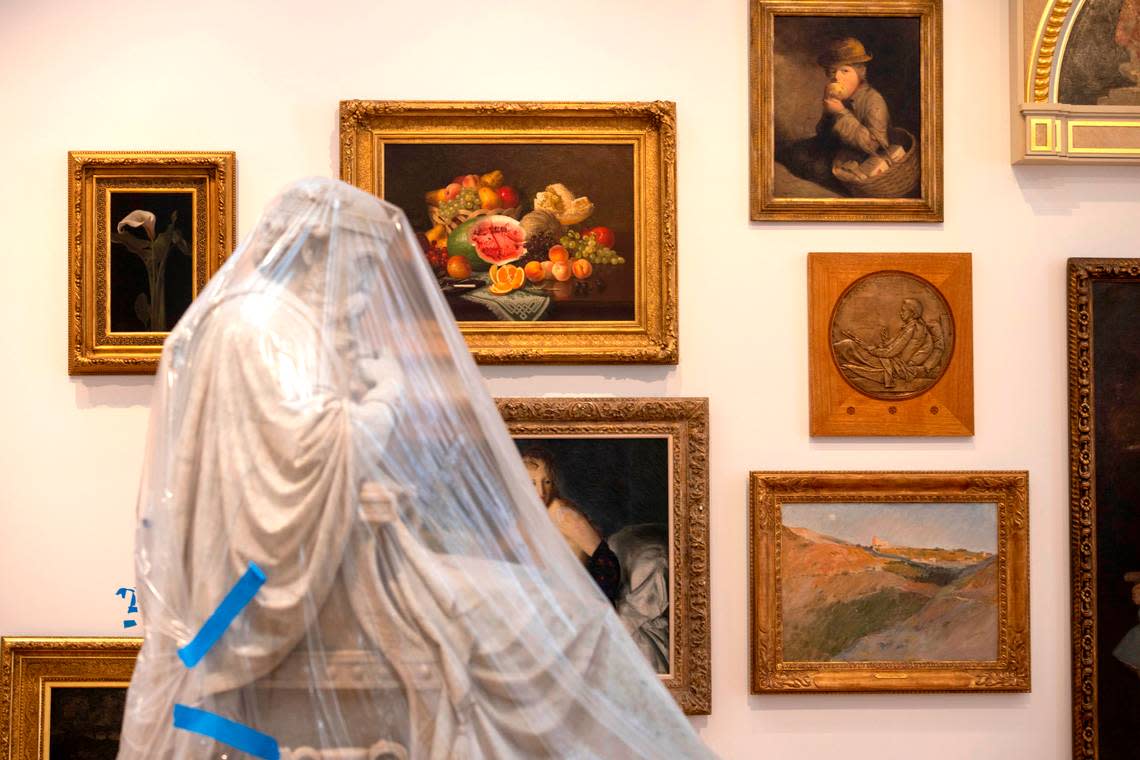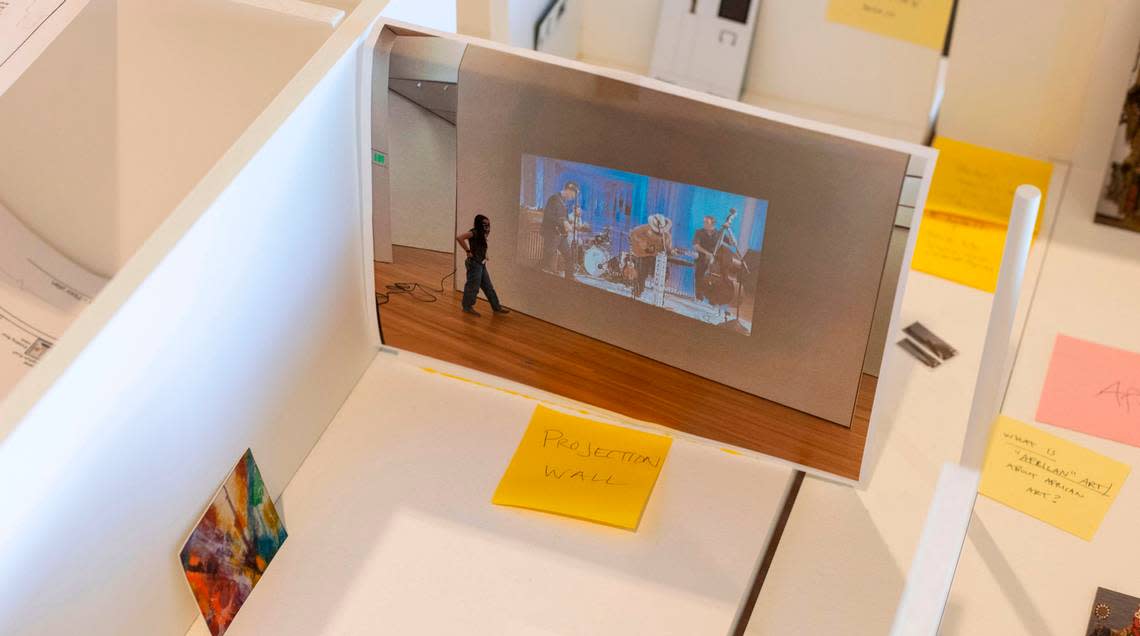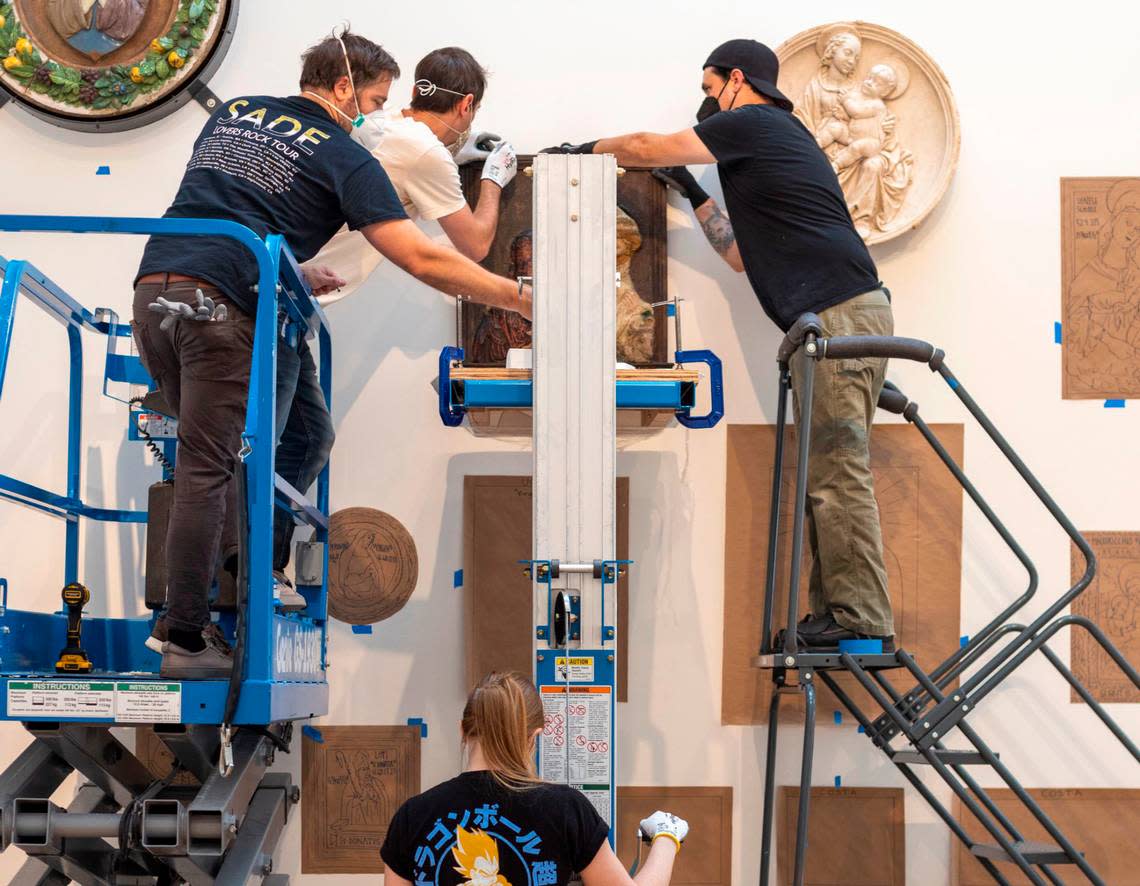The NC Museum of Art races to finish its major reimagination before October reopening
In October, on the 75th anniversary of the state legislature dedicating funds to build the People’s Collection, the North Carolina Museum of Art will unveil a completely reimagined collection. It will feature new thematic and interpretive galleries, plus numerous special commissions, loans and newly-acquired works.
It’s the first major reinstallation of the People’s Collection since 2010. The reorganization aims to challenge how art has traditionally been presented in museums according to geography and chronology, which can sideline or exclude works from historically marginalized groups.
Instead, the new exhibition aims to draw connections between art across time and place, to expand the narratives and representations on display and to increase the accessibility of art and the museum.
“The driving force and directive is to present what we see as a much more expanded and inclusive narrative, and I would also underscore, a more accurate narrative,” Chief Curator Linda Dougherty said.
This shift places the NC Art Museum within a larger transformation in the museum world, as a younger generation of curators comes onto the field and takes on historical practices and interpretations of art history that have served to exclude or devalue certain artists and groups, Dougherty said.
For Director Valerie Hillings, the reinstallation represents a signature project “to really change the stories that could be told” through the collection. The project first began when she received a grant from the Mellon Foundation at the start of her directorship in 2018.
“The whole goal here really is to remind North Carolinians that everything here belongs to the people of North Carolina. It’s the People’s Collection,” Hillings said. “And so our hope is that through all of our different channels, we’ll get information about the collection outside the walls.”

The museum’s West Building has been closed to the public since the end of May, and much of the East Building has been closed since January.
The museum will fully reopen with a series of events Oct. 8 and 9.
‘Made in Americas’ and other new galleries
Five new themed galleries will be presented as part of the reinstallation. They will focus on portraits and power, Egypt and Africa, the Americas, art conservation and interdisciplinary and multimedia art.
The galleries are organized in a way in which “we pick an idea, and we take work from every part of the collection to tell that story,” Dougherty said, gesturing to a sprawling to-scale model of the West Building filled with miniature art and Post-It notes. The curators call the model the “dollhouse” and use it to plan the reinstallation.
“Made in Americas,” for instance, will integrate the collection’s ancient American and American art to illustrate their relationships with each other and the wider world. “The Africa We Ought to Know” will bring together the collection’s Egyptian and African works where they had previously been separated, “celebrating that Africa is a continent where empires have flourished over millennia, each contributing to a fascinating antiquity and a vigorous history that extends to a dynamic and creative present,” according to a museum press release.
“There are ideas and themes and narratives that appear in art across the centuries and all over the world. And we want to draw your attention to all these ideas that we hold in common,” Dougherty said.

The reorganization means that certain exhibits will be moved to new locations in the museum. The Judaic art collection, for example, will sit in the middle of the European collection to situate it within a European and religious context.
“Context really impacts how you view a work of art,” Dougherty said. “I always say you can move a painting from one gallery to another and view it in a completely different way because of the conversations it has with the other artwork.”
What else to expect
Five site-specific commissions, including a new permanent installation by Argentinian artist Tomás Saraceno and year-long displays by Moroccan artist Hassan Hajjaj and North Carolinians Elizabeth Alexander and JP Jermaine Powell, will also go on view for the first time.
The collection will introduce newly acquired works from Indigenous sculptor Marie Watt, North Carolinian Endia Beal, South African multimedia artist William Kentridge, African American and Indigenous artist Edmonia Lewis and more.
Around 100 loaned works will join the collection from museums including the National Gallery of Art, the Rijksmuseum in Amsterdam, the Ackland Art Museum in Chapel Hill and the Black Mountain College Museum and Arts Center in Asheville.
The reinstallation will also introduce a community voices program in which commentary from 20 North Carolinians will appear in conversation with labels written by curators on different objects in the collection.
The community voices program, which will include artists, students, civic leaders, journalists and food activists, intends to further the museum’s goal of “connecting to our public and to our visitors,” Hillings said. “The way a curator talks about a work of art is often very different from the general public, and why they like something and why they react to it.”

In addition, to expand the accessibility of the museum and its collection, wall texts in the reinstallation will be translated in both English and Spanish, and QR codes will appear throughout galleries to provide visitors with more information and context.
The museum is also clear that there will be no one way to experience the collection. Instead, the curators hope the collection can elicit some “visual curiosity” and resonance with viewers and their own everyday lives.
“We’re just trying to loosen it up so that the visitor can choose and is offered different layers of being able to approach it,” Hillings said. “We’ll continue to look at [the collection], evaluate what would be interesting to change and keep responding to the audience and how the world is changing.”
A race to the finish
Two months out from reopening, the West Building is still filled with light and artwork. Many of the building’s white walls are marked with paper placeholders instead of the paintings they represent.
Rodin sculptures stand on their platforms wrapped in protective plastic, and the sound of drilling echoes through the lobby. An enormous commission stands partly finished, with its various elements on standby as the artist works on site to complete it.
The museum is on track to complete the reinstallation in time for its reopening. But it’s a race to the finish as the curators put final touches on the galleries and the teams on the ground carry out the reorganization of more than a thousand pieces of art.
Ian Larson, the museum’s chief art handler, and his team have orchestrated thousands of art movements for the reinstallation.
Director of Collections and Exhibitions Management Meghan Olis coordinates the scheduling of all those maneuvers to ensure that when a work has to be moved, it has an open place to land. And Maggie Gregory, manager of collections and head registrar, has been keeping a close eye on each of the works to make sure none are lost in the shuffle.
“It’s a lot of like playing a puzzle game,” Olis said about coordinating the reinstallation. “It’s been a heck of a schedule.”
And while the teams are well on their way to completing the reinstallation, Olis noted that supply chain issues and staff shortages due to the pandemic have slowed the process.
“It takes a village to do a reshuffle like this,” Larson said. The art handling team numbers six. “It’s a great way to learn the collection, because I’ll literally have had hands on every single piece of art that the museum owns” by the time the reinstallation is finished, he added.
“These kinds of big projects will either make or break a team. And for us, it’s really brought everyone together,” Olis said. “I’m looking forward to the finished product and being able to walk around and be proud of how hard we worked.”
In the meantime, visitors can view “Becoming the NCMA: 10 Decades of Collecting, 1924-2022” in the East Building through Aug. 21, and “Outlandish: Photographs by Ralph Burns | Photographs from the Collection of Allen G. Thomas Jr.” from Aug. 20 to Feb. 12.
